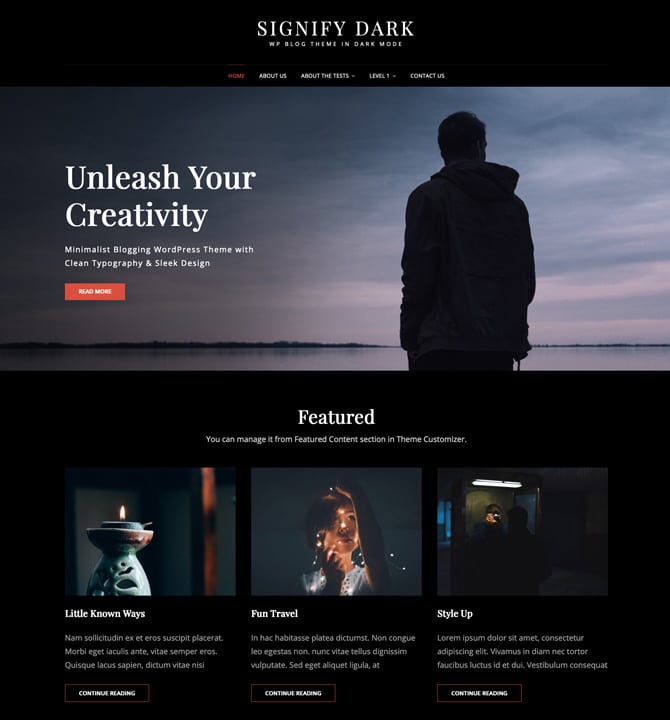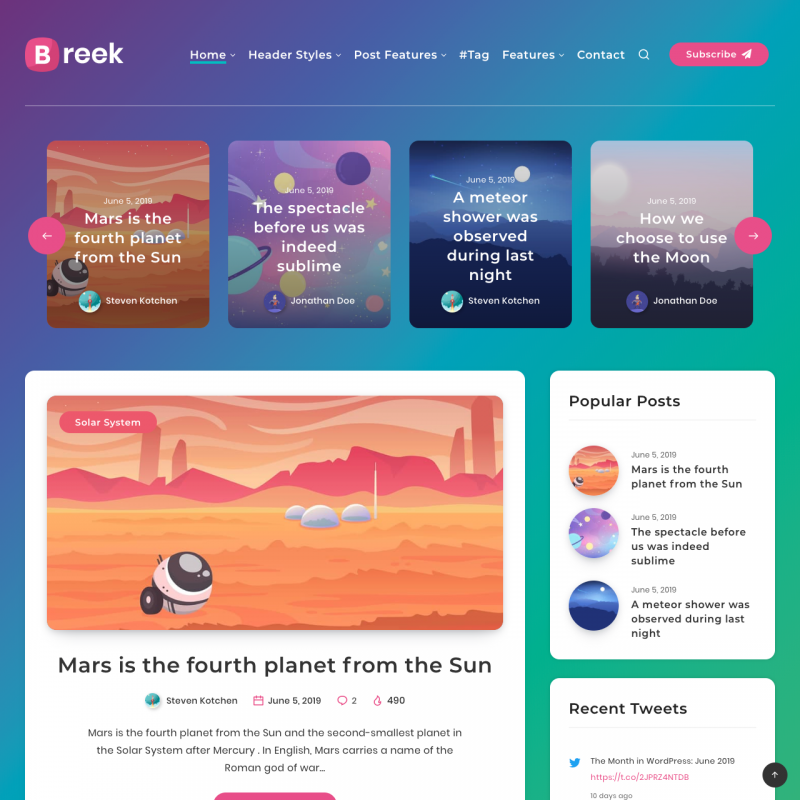Table of Content
WordPress will automatically populate it with blog posts. Unless you’re running a simple blog, you’ll most likely need to set a custom WordPress homepage. In this article, we looked at how to create and set a static WordPress page as the homepage.
Now that you know what a WordPress page is, let’s look at the three steps you’ll need to set a static page as your homepage. Your content, your design, and your data always belong to you. With WordPress you’re free to tell your story, grow your brand, or simply be yourself. Add a store, mailing list, portfolio, social feed, analytics; you’re in control with over 55,000 plugins. Start with a blank canvas or choose from a wide variety of themes and patterns. Customize every detail, from color and fonts to layouts and functionality.
WordPress Blog Design - Preparation
Headings use what’s known as an H1 tag; this is a Metadata attribute which is also picked up by the search engines to helps people find your content. It’s your responsibility to do your due diligence and make sure you are providing the best possible information. If you’re an expert then this may not be that challenging, but if not do your homework. The consequences of a poorly researched topic will cost you because people will “bounce” out of your site very quickly. Next, we will set the background for the section to our hero image. The first part of the page layout is going to be a full-width hero section with some text and a call to action button.
Simply click the ‘Edit Design’ link found under the ‘Homepage’ template. This will open the template in SeedProd’s visual editor. After that, you can use SeedProd to easily create a WordPress theme, including a completely custom homepage from scratch. You can use SeedProd to create a fully custom WordPress theme, including a custom homepage template.
CommentsLeave a Reply
This matches the design perfectly and should therefore you won’t need to change your Wordpress home page. You can do this by going to Settings » Reading page in your WordPress admin area. You need to select ‘A static page’ option under the ‘Your homepage displays’ section. After that, go ahead and select your home and blog pages. If you need help installing the theme, then take a look at our step by step guide on how to install a WordPress theme. When you change a setting, you can immediately see it in the preview on the right.
Using Method 2, you should scroll down to the section on customizing your blog page. Here you’ll learn how to add new blocks using drag and drop, and how to change the settings for each block on the page. Now we come to the most important part of the blog page — the posts. Elementor’s posts widget allows you to drag and drop the widget to the area where you’d like your posts to be and then customize them with Elementor’s editor.
Your Default Blog Homepage Sucks: How to Build a “Start” Page Instead
This feature is especially important to blogs and aggregator websites. These comments enable idea sharing with arguments for or against the article. You can either use plugins and themes, each with their limitations, or you can use Elementor, and all in one solution.
However, this can be an intimidating prospect if you don’t have much experience building websites. By default, WordPress shows your most recent posts in reverse chronological order on the front page of your site. Many WordPress users want a static front page or splash page as the front page instead.
How to Display Recent Blog Posts on WordPress Homepage
I mean – if you’re setting up your first blog, your default choice is probably going to be…the default. If you’ve already created the main menu, select it. Log in to your WordPress.org account to contribute to WordPress, get help in the support forum, or rate and review themes and plugins.

It’s the best WordPress theme builder plugin and can create beautiful website layouts and custom templates without writing any code. Elementor gives you the option to create and design your blog page easily with no effort and no coding requirements. It’s as simple as creating a new page, dragging what you need, and dropping it where you need it. You can customize and design it to make it unique and in tone with your company’s website.
We recommend Hello Theme as it has a minimal design and allows you to explore and customize your design any way you want it. Elementor has numerous widgets that make designing and adding functionality to your blog page much easier. You will see from this tutorial how quick and easy it is to make a custom page layout in no time at all. But if you are really stuck for time or don’t have the creative juices to make your own, there are lots of templates to get you started.
You can add as many blocks as you want to your homepage. You may also want to use a ‘full width’ or ‘no sidebars’ template for your page if your theme has one. Once you’re happy with your homepage, you need to click the ‘Publish’ button to make it live.
Well, you can achieve that with WordPress categories. You may want to display a section of the posts on other pages as well. If your website is already bringing in traffic, we recommend adding content to this page before proceeding to the next step. If your site is new and you are not getting visitors, you may leave the home page blank and add content later.

The more time you spend with this book, the more comfortable you’ll be with WordPress as your tool of choice. Log in to the WordPress site and go to the administration area. On the left sidebar there is an icon for settings, click it. Click on “Reading” in the submenu to expand the “Settings” submenu. When you navigate to /blog it will show your posts archive.
Nowadays, however, all kinds of different websites are created using WordPress, so it’s understandable that not everyone needs this feature. Fortunately, it’s very easy to disable comments in WordPress. You can turn off comments for individual pages or posts or for your entire website. This simple drag and drop builder will show a live preview of your page to the right and a toolbar on the left. You can add new blocks by dragging them onto the page, rearrange them by dragging them up and down with your mouse, and customize any block by clicking on it. The easiest way to edit your homepage is by using SeedProd.


No comments:
Post a Comment